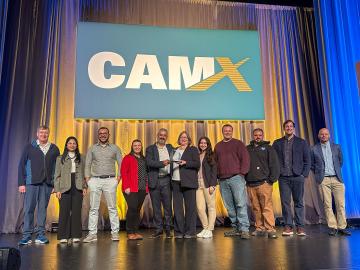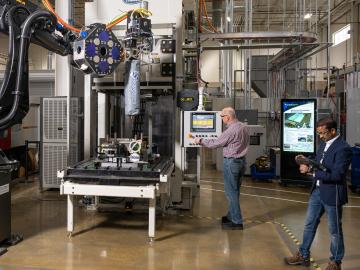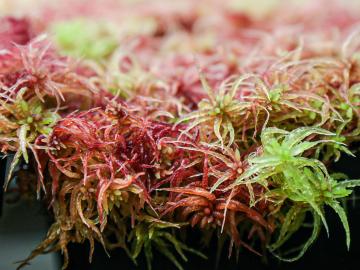
Filter News
Area of Research
News Topics
- (-) Big Data (38)
- (-) Bioenergy (38)
- (-) Biomedical (20)
- (-) Composites (17)
- (-) Computer Science (69)
- (-) Energy Storage (36)
- (-) Microscopy (11)
- (-) Summit (23)
- 3-D Printing/Advanced Manufacturing (50)
- Advanced Reactors (8)
- Artificial Intelligence (71)
- Biology (51)
- Biotechnology (16)
- Buildings (43)
- Chemical Sciences (54)
- Clean Water (11)
- Coronavirus (4)
- Critical Materials (13)
- Cybersecurity (9)
- Education (5)
- Emergency (4)
- Environment (81)
- Exascale Computing (40)
- Fossil Energy (6)
- Frontier (40)
- Fusion (21)
- Grid (32)
- High-Performance Computing (78)
- Hydropower (4)
- Irradiation (2)
- Isotopes (28)
- ITER (2)
- Machine Learning (38)
- Materials (83)
- Materials Science (42)
- Mathematics (9)
- Mercury (2)
- Microelectronics (4)
- Molten Salt (2)
- Nanotechnology (9)
- National Security (55)
- Neutron Science (55)
- Nuclear Energy (36)
- Partnerships (53)
- Physics (23)
- Polymers (9)
- Quantum Computing (32)
- Quantum Science (31)
- Security (11)
- Simulation (53)
- Software (1)
- Space Exploration (7)
- Statistics (3)
- Transportation (33)
Media Contacts

Raina Setzer knows the work she does matters. That’s because she’s already seen it from the other side. Setzer, a radiochemical processing technician in Oak Ridge National Laboratory’s Isotope Processing and Manufacturing Division, joined the lab in June 2023.

The Hub & Spoke Sustainable Materials & Manufacturing Alliance for Renewable Technologies, or SM2ART, program has been honored with the composites industry’s Combined Strength Award at the Composites and Advanced Materials Expo, or CAMX, 2023 in Atlanta. This distinction goes to the team that applies their knowledge, resources and talent to solve a problem by making the best use of composites materials.

Researchers at ORNL are extending the boundaries of composite-based materials used in additive manufacturing, or AM. ORNL is working with industrial partners who are exploring AM, also known as 3D printing, as a path to higher production levels and fewer supply chain interruptions.

A type of peat moss has surprised scientists with its climate resilience: Sphagnum divinum is actively speciating in response to hot, dry conditions.

Oak Ridge National Laboratory scientists identified a gene “hotspot” in the poplar tree that triggers dramatically increased root growth. The discovery supports development of better bioenergy crops and other plants that can thrive in difficult conditions while storing more carbon belowground.

In fiscal year 2023 — Oct. 1–Sept. 30, 2023 — Oak Ridge National Laboratory was awarded more than $8 million in technology maturation funding through the Department of Energy’s Technology Commercialization Fund, or TCF.

Currently, the biggest hurdle for electric vehicles, or EVs, is the development of advanced battery technology to extend driving range, safety and reliability.
To better understand important dynamics at play in flood-prone coastal areas, Oak Ridge National Laboratory scientists working on simulations of Earth’s carbon and nutrient cycles paid a visit to experimentalists gathering data in a Texas wetland.

As current courses through a battery, its materials erode over time. Mechanical influences such as stress and strain affect this trajectory, although their impacts on battery efficacy and longevity are not fully understood.

ORNL has been selected to lead an Energy Earthshot Research Center, or EERC, focused on developing chemical processes that use sustainable methods instead of burning fossil fuels to radically reduce industrial greenhouse gas emissions to stem climate change and limit the crisis of a rapidly warming planet.


